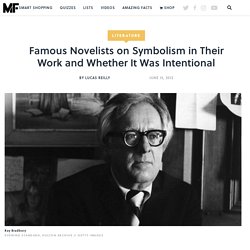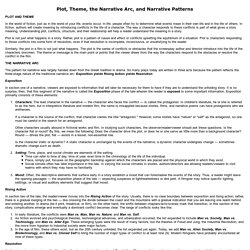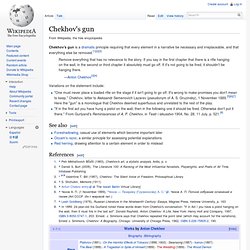

Famous Novelists on Symbolism in Their Work and Whether It Was Intentional. Eric Carle's bright, beloved children's classic about an insatiable caterpillar has been collecting awards—and fans—since it was first published in 1969.

Here are a few things you might not know about The Very Hungry Caterpillar. 1. The Very Hungry Caterpillar's bright colors contrast a dark period in Eric Carle's childhood. Eric Carle was born in Syracuse, New York, on June 25, 1929. But when Carle was 6, his father relocated the family back to his native Stuttgart, Germany. 10 Literary Devices, And Where You Can Find Them in Science Fiction. Giving Washington a Lesson in Meter and Verse. Structure, Device, and Meaning in Poetry: IB English A Lang/Lit HL - Part 4. Tropes and Figures. Literary technique. A literary technique (also known as literary device) is any method an author uses to convey his or her message.[1] This distinguishes them from literary elements, which exist inherently in literature.

Literary techniques pertaining to setting[edit] Literary techniques pertaining to plots[edit] Literary techniques pertaining to narrative perspective[edit] Literary techniques pertaining to style[edit] Literary techniques pertaining to theme[edit] Symbolism Wiki. LitGloss. Freytag Triangle. Plot, Theme, the Narrative Arc, and Narrative Patterns. In the world of fiction, just as in the world of your life, events occur.

In life, people often try to determine what events mean in their own life and in the life of others. Chekhov's gun. Chekhov's gun is a dramatic principle requiring that every element in a narrative be necessary and irreplaceable, and that everything else be removed.[1][2][3] Remove everything that has no relevance to the story.

If you say in the first chapter that there is a rifle hanging on the wall, in the second or third chapter it absolutely must go off. If it's not going to be fired, it shouldn't be hanging there. Variations on the statement include: "One must never place a loaded rifle on the stage if it isn't going to go off. See also[edit] Foreshadowing, casual use of elements which become important laterOccam's razor, a similar principle for assessing potential explanationsRed herring, drawing attention to a certain element in order to mislead References[edit] Jump up ^ Petr Mikhaĭlovich Bit︠s︡illi (1983), Chekhov's art, a stylistic analysis, Ardis, p. x Jump up ^ Daniel S.
Keywords from Literature (tragedy, anagnorisis, bathos, etc.) Story within a story. Types of nested story[edit] Story within a story[edit] The inner stories are told either simply to entertain or more usually to act as an example to the other characters.

In either case the story often has symbolic and psychological significance for the characters in the outer story. There is often some parallel between the two stories, and the fiction of the inner story is used to reveal the truth in the outer story. The literary device of stories within a story dates back to a device known as a frame story, when the outer story does not have much matter, and most of the bulk of the work consists of one or more complete stories told by one or more storytellers. AP Poetry Terms. AP English Poetry Terms (Presented by Dennis Carroll of High Point University at AP Workshop) Listed and defined below are literary terms that you will need to know in order to discuss and write about works of poetry.

You are already familiar with many of these. VirtuaLit Fiction: Elements of Fiction. The Hare and the Tortoise One day the speedy hare was bragging among his fellow animals.

“I have never been beaten in a race,” he said. “When I use my amazing speed, the race is over almost instantly. Would any of you like to take me on?” “I’ll challenge you,” said the tortoise. “You against me?” The animals set up a course, and the race began. “Slow and steady wins the race,” said the smiling tortoise. Metaphors comic - Stuart McMillen and Nick Barter graphic novel. Why 'Turd Blossom' Is Metaphor but Not Metonym - James Fallows. Metaphors Are Us - Issue 1: What Makes You So Special. The other day I fixed something—a rarity for me.

The flotation device in the toilet water tank was rubbing against the side, getting stuck halfway up so that the tank didn’t fill completely. I own a hammer and know how to operate it. But I couldn’t fit it into the tank to whack the device back into place. Ditto for owning and using a wrench. It wouldn’t fit either. I was proud of myself. Humans used to be unique in lots of ways. In recent years scientists from leading universities, including UCLA, University College London, and Yale, have made remarkable insights into the neurobiology of symbols. Symbols serve as a simplifying stand-in for something complex. Symbolic language brought huge evolutionary advantages. Language pries apart a message from its meaning, and as our hominid ancestors kept getting better at this separation, great individual and social advantages accrued. The art of the metaphor Jane Hirshfield.